Gooseneck vs. 5th Wheel
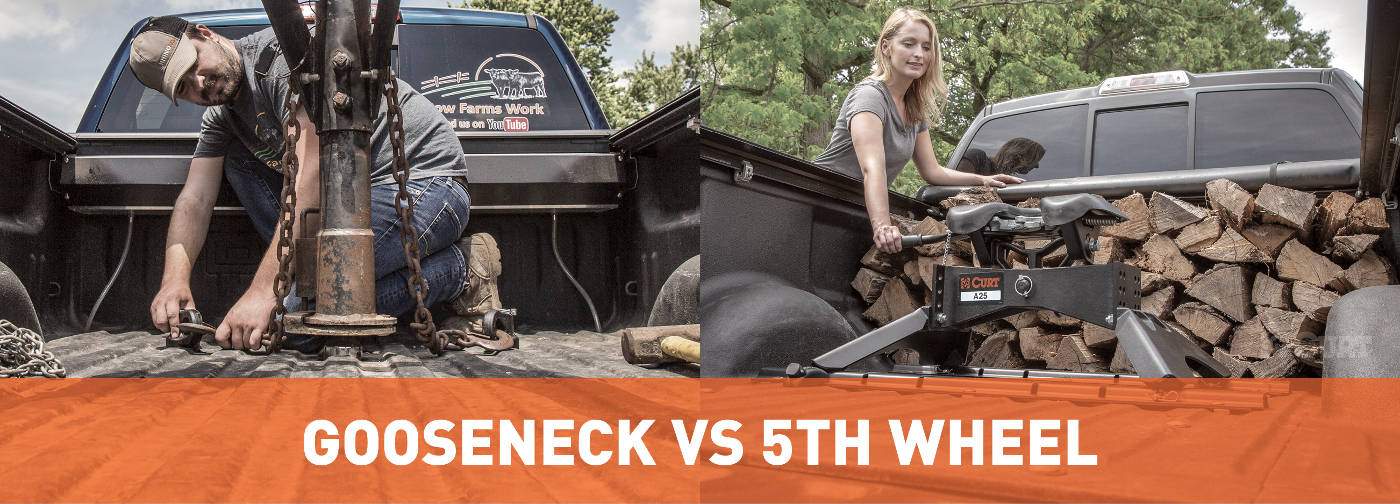

Differences between 5th Wheel and Gooseneck Hitches
Some of the differences between gooseneck hitches and 5th wheel hitches are the coupling mechanism, the level of invasiveness in the truck bed, overall cost and the types of trailers typically pulled by each hitch.
Despite these difference, gooseneck hitches and 5th wheel hitches have many similarities. Both are used for towing heavy-duty trailers, and both require a pickup truck for installation, mounting into the truck bed, over the rear axle.


Gooseneck hitch features
Differences
- Ball and coupler connection
- Minimally invasive
- Comparatively less expensive
- Commercial towing and agriculture
- Typically used for livestock trailers and flatbed trailers
Similarities
- Installed into truck bed
- Up to 30,000 lbs. capacity
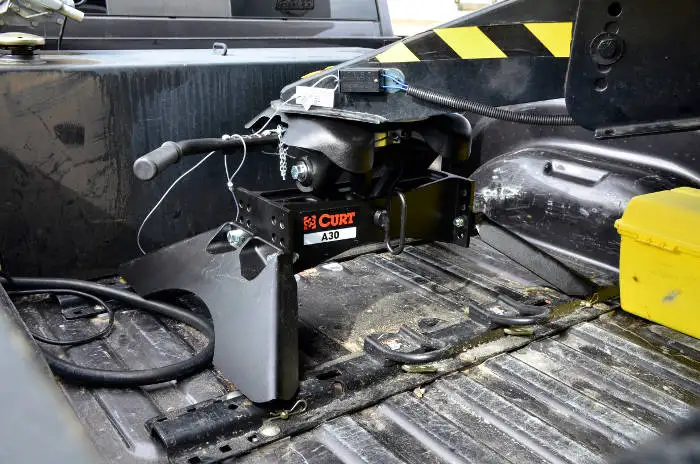

5th wheel hitch features
Differences
- Jaws and kingpin connection
- Bulky with option to remove
- Enhanced stability
- Recreational towing
- Typically used for RV travel trailers and campers
Similarities
- Installed into truck bed
- Up to 30,000 lbs. capacity




What is a gooseneck hitch?
A gooseneck hitch is a truck bed hitch that connects to a gooseneck trailer using a hitch ball. The main body of the hitch typically mounts underneath the truck bed and bolts onto the truck frame using brackets.
Gooseneck hitches are typically rated for pulling up to 30,000 lbs. or more, and they are commonly used to tow livestock trailers, horse trailers and flatbed equipment haulers.
What is a 5th wheel hitch?
A 5th wheel hitch is a truck bed hitch that couples to the kingpin of a 5th wheel trailer. Metal jaws or a locking bar secure the kingpin, and a pivoting head plate on the hitch provides the necessary movement to tow the trailer smoothly.
5th wheel hitches are available in weight capacities from 16,000 lbs. to 30,000 lbs. Their most common usage is towing RV trailers and large campers.
Learn more about how to hook up a 5th wheel trailer


Gooseneck vs 5th wheel pros and cons list
Gooseneck and 5th wheel hitches each have their own advantages and disadvantages. Gooseneck hitches are less invasive, relatively less expensive and make it easier to free up the truck bed with smaller, lighter-weight components.
Comparatively, 5th wheel hitches generally offer smoother, quieter, more stable towing and are available in a range of weight capacities to suit a variety of trucks.


Gooseneck hitch pros and cons
Pros
- Minimally invasive in truck bed once installed
- Lightweight, easy-to-operate ball
- Simple coupling mechanism
- Great for agriculture, commercial
- Convertible to 5th wheel
Cons
- Hole saw drilling in truck bed
- Less stability for tall trailers
- Noisy compared to 5th wheel


5th wheel hitch pros and cons
Pros
- Smoother, more stable towing compared to gooseneck
- Variety of weight capacity options
- Sliding options for short-bed trucks
- Great for RVs, recreation
- Convertible to gooseneck
Cons
- Heavy assembly is difficult to move
- Relatively more expensive
- Permanent truck bed base rails


Advantages of a gooseneck hitch
Gooseneck hitches offer several advantages over 5th wheel hitches. First, they are far less invasive and bulky in the truck bed. Above the truck bed, a gooseneck hitch consists merely of a gooseneck ball and safety chain anchors. Many models also feature a removable or folding ball that is comparatively lightweight and easy to operate.
The coupling mechanism of a gooseneck hitch is very simple and uncomplicated, offering a solid connection for heavy-duty farm trailers, flatbeds and more.
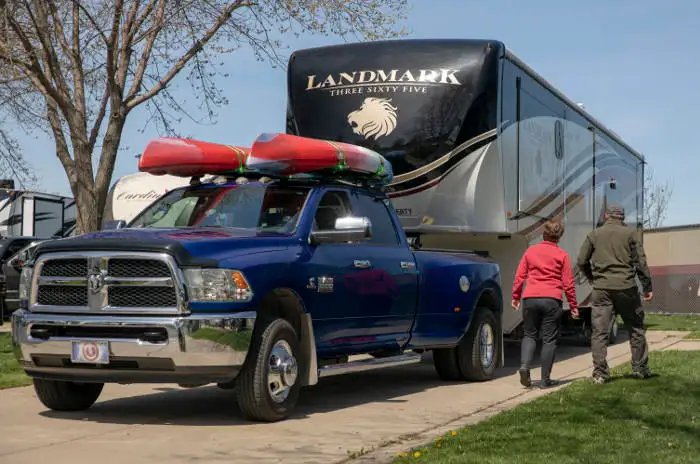

Advantages of a 5th wheel hitch
While a 5th wheel hitch may consist of more components and an overall bulkier and heavier design, this type of hitch is selected for recreational use for a reason.
With a more intricate design, a 5th wheel provides generally smoother, quieter and more stable towing compared to a gooseneck hitch. This makes it ideal for RVs, campers and travel trailers.
5th wheel hitches also come in a wider variety of weight capacity options, as well as slider options. 5th wheel sliders / rollers are designed to allow short-bed trucks to tow without obstruction when turning.
Learn more about measuring your truck bed for a slider
5th wheel trailer vs gooseneck trailer


5th wheel trailer kingpin
A 5th wheel trailer uses a pin box and a kingpin to connect to the 5th wheel hitch. The kingpin inserts into the 5th wheel head, similar to a semi truck hitch.


Gooseneck trailer coupler
A gooseneck trailer has a long, vertical coupler to latch onto the gooseneck hitch ball. The coupler comes down onto the ball, similar to a bumper-pull coupler.
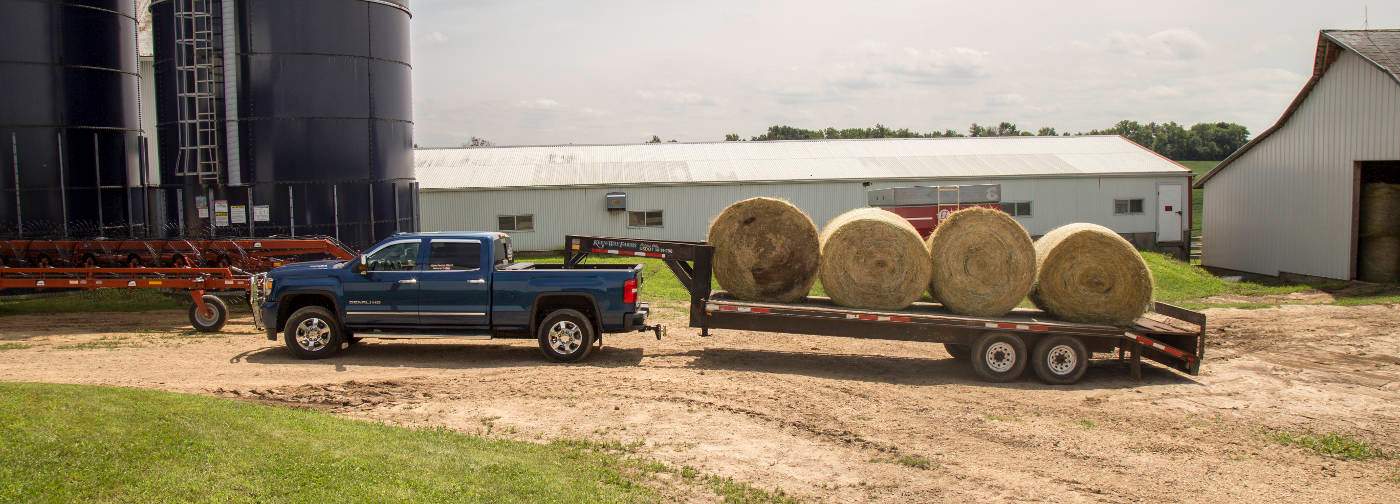

How to convert 5th wheel to gooseneck
5th wheel to gooseneck conversion is done using one of two types of products: a 5th wheel adapter plate or a 5th wheel gooseneck hitch. To convert your own towing setup, start with which hitch your truck is already equipped with.
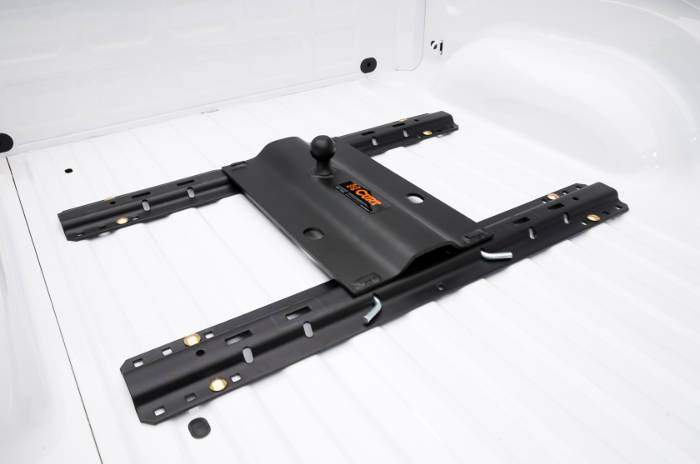

5th wheel gooseneck hitch
To convert fifth wheel to gooseneck, a 5th wheel gooseneck hitch is the answer. Your truck must already have industry-standard 5th wheel base rails for this options. Simply drop the hitch into the rails and secured with pins. This type of hitch provides a standard gooseneck ball.


5th wheel adapter plate
If your truck has a gooseneck hitch, a 5th wheel adapter plate may be the answer. Available for select gooseneck hitches, 5th wheel adapter plates drop into the gooseneck hole and provide a set of industry-standard 5th wheel rails.
Gooseneck to 5th wheel adapter video
5th wheel to gooseneck adapter pros & cons
Pros
- Ability to tow both trailer types
- Easy to install on existing platform
- Industry-standard rails on adapter plates
- Standard ball on gooseneck adapter hitches
Cons
- Reduced weight capacity (20,000 to 25,000 lbs.)
- Limited gooseneck hitch compatibility


FAQs
What is a gooseneck adapter?
A gooseneck adapter is a device that allows a gooseneck hitch to couple to a 5th wheel trailer. It is made up of a shank and a set of 5th wheel rails. The shank portion drops into the gooseneck hitch like a gooseneck ball. However, instead of the ball being the coupling mechanism, the adapter rails provide a mounting platform for a 5th wheel hitch.
Alternatively, a gooseneck adapter may refer to a type of gooseneck hitch that is uniquely designed to mount onto a set of 5th wheel rails, instead of bolting onto under-bed brackets.
Which is better fifth wheel or gooseneck?
A fifth wheel hitch is better for recreational towing, and a gooseneck hitch is better for farming and commercial towing. Fifth wheel hitches provide a smoother and more stable ride, while gooseneck hitches are preferred for their minimally invasive design. Fifth wheel hitches are more difficult to move in and out of the truck bed. They are also relatively more expensive. Gooseneck hitches, however, can be noisier.
When deciding between a fifth wheel hitch and gooseneck hitch, begin by considering which type of trailer you will be towing and what your priorities are based on the pros and cons of each hitch type.
Is a gooseneck the same as a fifth wheel?
No, a gooseneck is not the same as a fifth wheel. A gooseneck hitch uses a ball to connect to a unique style of vertical coupler on a gooseneck trailer. A fifth wheel hitch uses a set of jaws and pivoting plate to connect to the kingpin of a fifth wheel trailer.
In a gooseneck connection, the coupler or receiver mechanism is on the trailer side. In a fifth wheel connection, the coupler is on the vehicle side.
Is a fifth wheel the same as a gooseneck?
No, a fifth wheel is not the same as a gooseneck. A fifth wheel hitch is comprised of a hitch head with a plate and jaws that wrap around the fifth wheel trailer kingpin. A gooseneck hitch is primarily made up of a ball that serves as a connection point for a gooseneck trailer coupler.
Fifth wheel hitches are characteristically larger and more intrusive in the truck bed when installed. However, they are also generally quieter and ideal for recreational towing.
Can you pull a 5th wheel with a gooseneck?
Yes, a 5th wheel trailer can be pulled with a gooseneck hitch as long as there is sufficient weight capacity and the correct adapter is installed. A 5th-wheel-to-gooseneck adapter plate can be installed into the gooseneck hitch, providing a set of 5th wheel rails that can then accept a 5th wheel hitch.
This type of connection may require more components, but it allows a single truck to pull both types of trailers. It also eliminates the need for permanent 5th wheel rails, which can be an obstruction when loading cargo in the truck bed.
 ARIES
ARIES  CURT
CURT  LUVERNE
LUVERNE  UWS
UWS 



